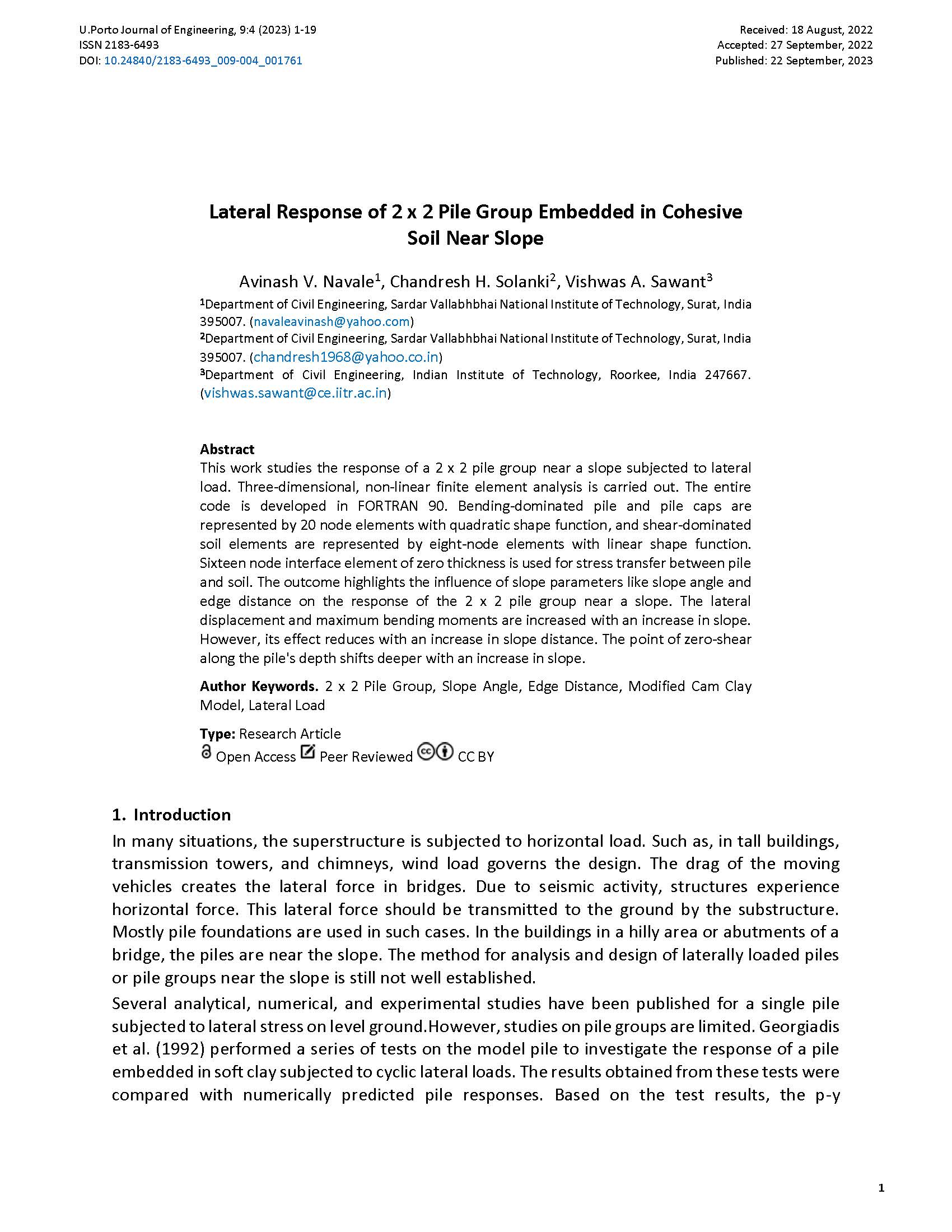Lateral Response of 2 x 2 Pile Group Embedded in Cohesive Soil Near Slope
Main Article Content
Abstract
This work studies the response of a 2 x 2 pile group near a slope subjected to lateral load. Three-dimensional, non-linear finite element analysis is carried out. The entire code is developed in FORTRAN 90. Bending-dominated pile and pile caps are represented by 20 node elements with quadratic shape function, and shear-dominated soil elements are represented by eight-node elements with linear shape function. Sixteen node interface element of zero thickness is used for stress transfer between pile and soil. The outcome highlights the influence of slope parameters like slope angle and edge distance on the response of the 2 x 2 pile group near a slope. The lateral displacement and maximum bending moments are increased with an increase in slope. However, its effect reduces with an increase in slope distance. The point of zero-shear along the pile's depth shifts deeper with an increase in slope.
Downloads
Article Details

This work is licensed under a Creative Commons Attribution 4.0 International License.
Authors who publish with this journal agree to the following terms:
- Authors retain copyright and grant the journal right of first publication with the work simultaneously licensed under a Creative Commons Attribution License that allows others to share the work with an acknowledgement of the work's authorship and initial publication in this journal.
- Authors grant the journal the rights to provide the article in all forms and media so the article can be used on the latest technology even after publication and ensure its long-term preservation.
- Authors are able to enter into separate, additional contractual arrangements for the non-exclusive distribution of the journal's published version of the work (e.g., post it to an institutional repository or publish it in a book), with an acknowledgement of its initial publication in this journal.
- Authors are permitted and encouraged to post their work online (e.g., in institutional repositories or on their website) prior to and during the submission process, as it can lead to productive exchanges, as well as earlier and greater citation of published work (See The Effect of Open Access).

